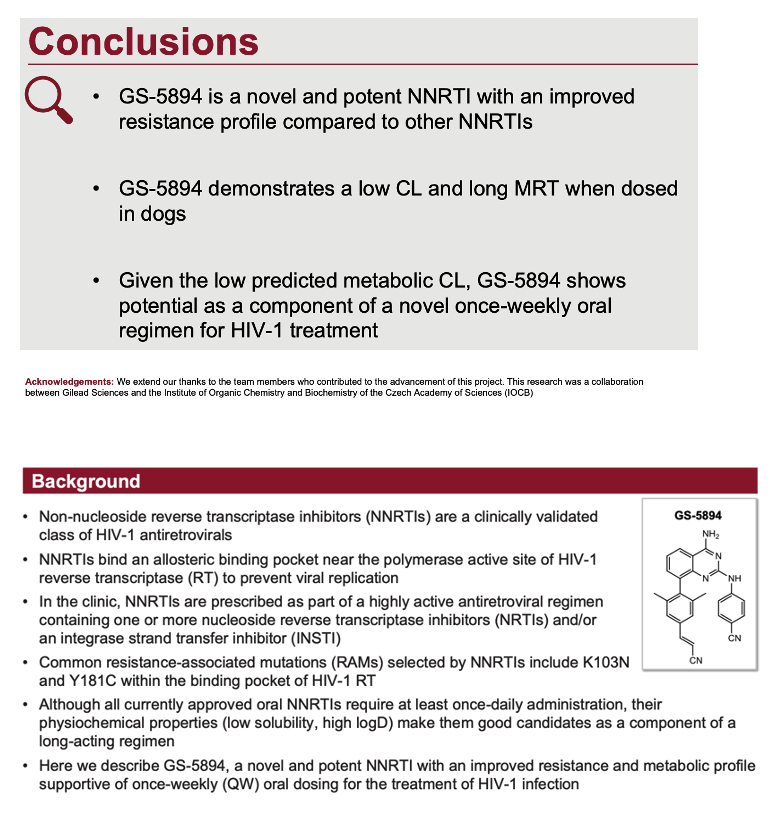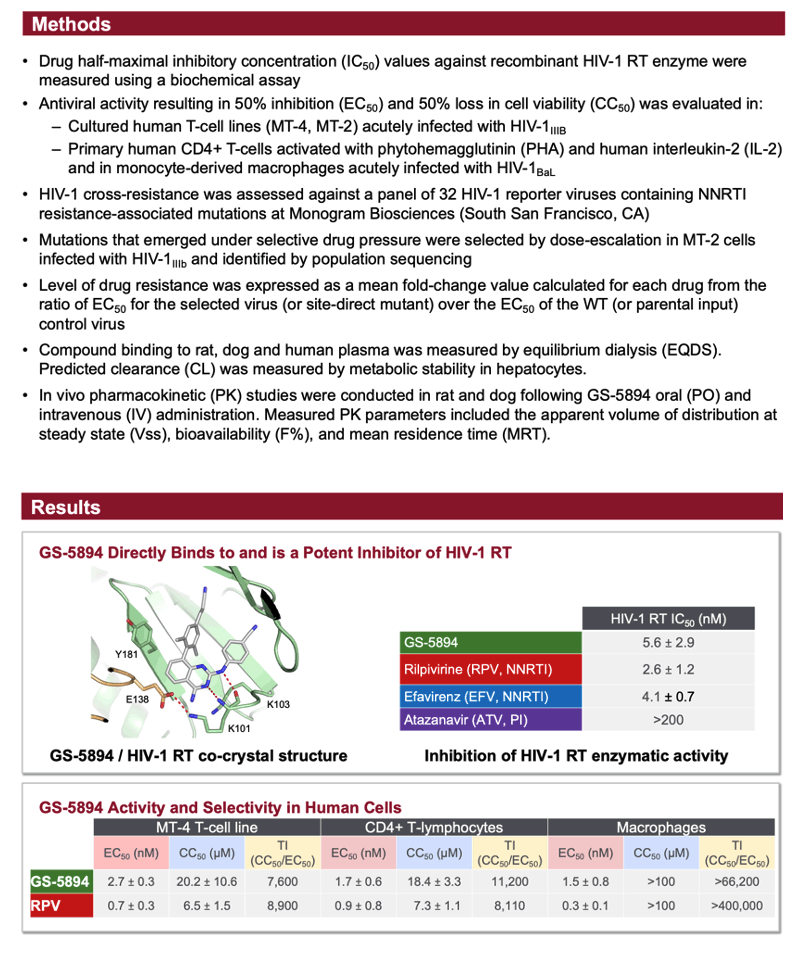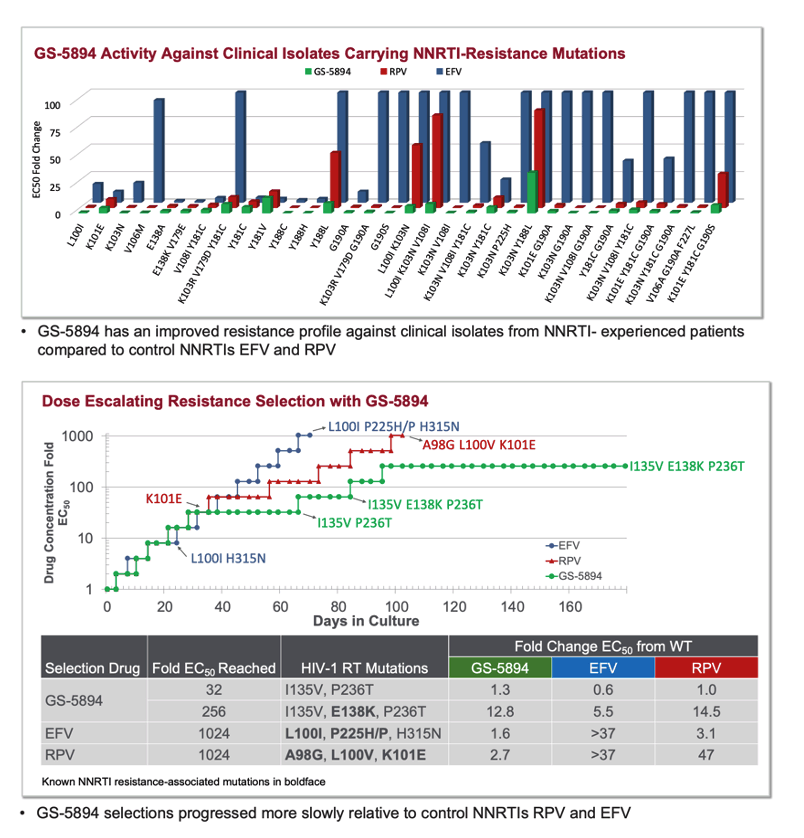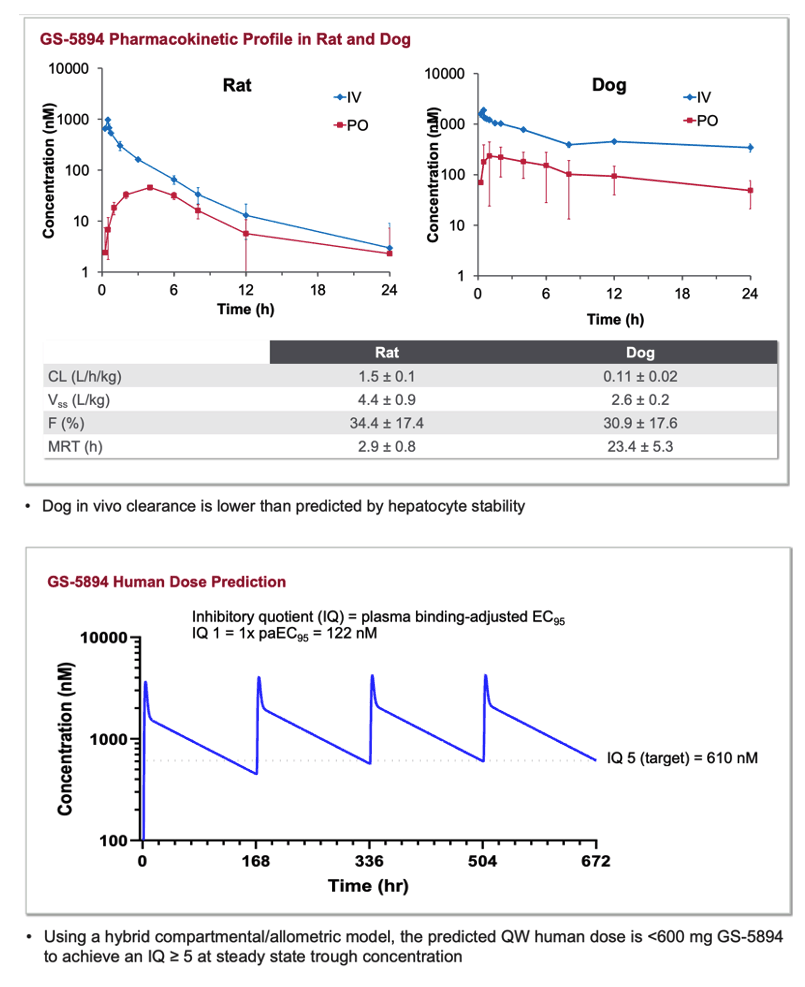 |
 |
 |
| |
Preclinical Characterization of GS-5894, a Potent NNRTI With Once Weekly Oral Dosing Potential
|
| |
| |
CROI 2024 March 3-6 Denver
Eric Lansdon1, Andrew Mulato1, Petr Jansa1, Gary Lee1, George Stepan1, Mike Matles1, Kelly Wang1, Carmen Ip1, Julie Fogarty1, Dan Soohoo1, Bernard Murray1, Stephen Yant1, Zlatko Janeba2, Richard L. Mackman1, Tomas Cihlar1
1Gilead Sciences, Inc, Foster City, CA, USA, 2Institute of Organic Chemistry and Biochemistry of the CAS, Prague, Czech Republic
Non-nucleoside reverse transcriptase inhibitors (NNRTIs) target an allosteric binding pocket near the polymerase active site of HIV-1 reverse transcriptase (RT) to prevent viral replication. To date, all approved NNRTIs must be dosed once-daily as part of a highly active antiretroviral regimen. Due to their physiochemical properties such as low solubility and high logD, NNRTIs are good candidates for long-acting regimens. Here we describe a novel and potent NNRTI with metabolic stability supportive of once-weekly (QW) oral dosing for the treatment of HIV-1 infection.
Antiviral activity against IIIB WT virus and drug resistant variants was measured in cytopathic assays using the MT-2 and MT-4 T-cell lines. Cross-resistance was assessed against a Monogram panel of HIV-1 reporter viruses containing NNRTI resistance-associated mutations. Mutations that emerged under selective drug pressure were identified by dose-escalation and fixed-drug concentration resistance selections. Compound binding to rat, dog and human plasma was measured by equilibrium dialysis. Predicted clearance (CL) was measured by metabolic stability in human hepatocytes. Additional oral and intravenous pharmacokinetic studies were conducted in rat and dog.
GS-5894 is a potent and selective inhibitor of HIV-1 replication in the MT-4 T-cell line, in primary human CD4+ T lymphocytes, and in monocyte-derived macrophages, with EC50 and selectivity index (CC50/EC50) values ranging from 1.5 to 4.2 nM and 5,152 to >66,000, respectively. The antiviral activity of GS-5894 against a panel of 32 NNRTI-resistant reporter HIV-1 variants derived from treatment-experienced people with HIV (PWH) was superior to that of other marketed NNRTIs. GS-5894 dose escalating resistance selections resulted in the emergence of an HIV-1 triple RT variant (I125V+E138K+P236T) that was cross-resistant to EFV and RPV. GS-5894 is tightly bound to plasma across species though the human binding-adjusted EC95 is 122 nM. The human predicted CL for GS-5894 (uncorrected for plasma binding) is 0.17 L/h/kg. GS-5894 has oral bioavailabilities of 34% and 31% (dosed as a solution), and mean-residence times of 2.9 and 23 hours in rat and dog, respectively.
GS-5894 is a novel and potent NNRTI with an improved resistance profile compared to other NNRTIs. Given the high plasma binding and low predicted metabolic clearance, GS-5894 has the potential for once-weekly oral dosing in PWH for the treatment of HIV-1 infection.




|
| |
|
 |
 |
|
|